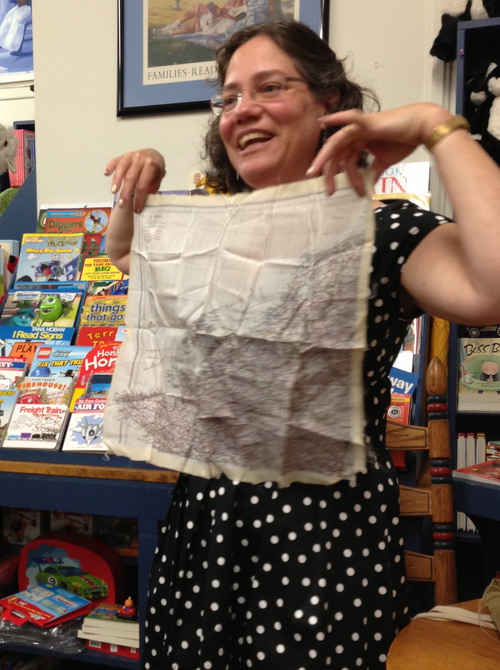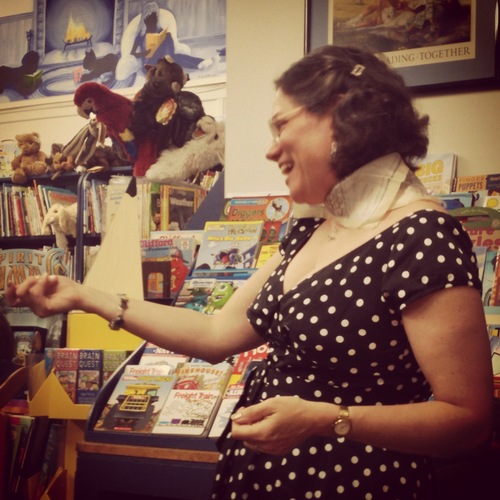Author: Deborah Hopkinson
Publisher: Knopf (September 10, 2013)
Source: Copy for Review
Audience: Grades 5th to 8th
Keywords:
Historical Fiction, Europe, 1800's, Epidemics
Description of the book:
Eel has troubles of his own: As an orphan and a "mudlark," he spends his days in the filthy River Thames, searching for bits of things to sell. He's being hunted by Fisheye Bill Tyler, and a nastier man never walked the streets of London. And he's got a secret that costs him four precious shillings a week to keep safe.
But even for Eel, things aren't so bad until that fateful August day in 1854—the day the Great Trouble begins. Mr. Griggs, the tailor, is the first to get sick, and soon it's clear that the deadly cholera—the "blue death"—has come to Broad Street.
Everyone believes that cholera is spread through poisonous air. But one man, Dr. John Snow, has a different theory. As the epidemic surges, it's up to Eel and his best friend Florrie to gather evidence to prove Snow's theory before the entire neighborhood is wiped out.
Part medical mystery, part survival story, and part Dickensian adventure, Deborah Hopkinson's The Great Trouble is a celebration of a fascinating pioneer in public health and a gripping novel about the 1854 London cholera epidemic.
Backmatter includes an author's note, time line, and further reading suggestions.
My thoughts:
When I read a book, I have a checklist in my head to determine if I liked it and why. The checklist for Deborah Hopkinson's newest book
The Great Trouble would look a little like this:
Historical Fiction that makes you want to know more about the subject. - check
Description of the setting that makes you actually feel like you experienced it. - check
Characters that your care about and would want to know (or not). - check
Mystery and intrigue. - check
Book that sucks you in and you can't put down. - check
Yes, this book has it all. As a 5th grader, I would have been thoroughly fascinated with Eel (the main character), the setting of London in 1854, and what was happening at the time to the individuals of this city as a result of the Cholera epidemic. I guess the adult me is still intrigued by the same things. Since no one seems to have created a machine which would allow me to travel through time, I will have to travel to different time periods through books. And when you think about it, travel through books has its advantages.
In
The Great Trouble, Hopkinson from the beginning paints a very real picture of life for the poor and working class of Victorian London. It is really not a great place to be in some ways. Most of the time there is not enough food or clean water. The sewage and waste disposal system was - well non-existant, and it really was a smelly place. Aside from making me appreciate modern bathrooms, plumbing, and sewers, I was really thankful for my life versus the life of many people during that time period.
Hopkinson then introduces readers to the very real concern of cholera and disease during that time period. She also has created memorable fictional characters such as Eel, his best friend Florrie, Thumbless Jake, and Fisheye Bill Tyler, and paired them with the very real Dr. John Snow, Jane Weatherburn (Dr. Snow's housekeeper), and Rev. Henry Whitehead. There are characters that you love, and ones that you will emotionally feel for, and ones that you just plain won't like. It is the emotional connection to the characters that also fuels the readers interest in these individuals, and in their plight.
By adding in the race to discover what causes cholera as well as what is causing the spread of cholera, readers have a gripping story that will keep them reading. At the end of the book, readers can learn more about the actual historical figures in the book by reading the author's note. There is also a timeline, and additional resources to investigate.
Look for
The Great Trouble at your local public library or pick up a copy at your community bookstore. When possible, please consider an independent bookstore.
Check out this Meet the Author video by AdLit:
Find out more information about author, Deborah Hopkinson visit her website:
www.deborahhopkinson.com
Consider pairing the picture book
A Boy Called Dickens by Deborah Hopkinson (see my review
here) with
The Great Trouble.
A Boy Called Dickens is set in a London, though a bit earlier than 1854, and the illustrations provide students with a visual and a sense of place for that time period. Adult readers looking for more information about the Cholera Epidemic and Dr. John Snow might want to check out
The Ghost Map by Steven Johnson.
If you are interested in the Teacher's Guide, click
here.
To visit all of the stops for The Great Trouble Blog Tour, see the schedule below:
September 10 –
Sharp Read
September 11 –
Librarian in Cute Shoes
September 12 –
Random Acts of Reading
September 13 –
Styling Librarian
September 14 –
Kidlit Frenzy
September 15 –
Busy Librarian
September 16 –
{Eat the Book}
September 17 –
Nerdy Book Club





















